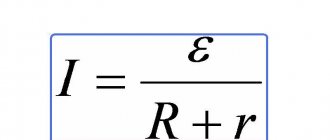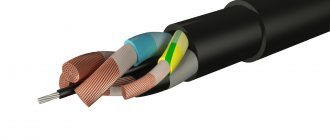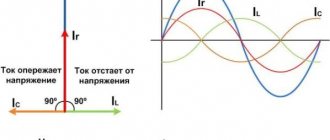When we choose a TV, we often come across such a parameter as the frame rate - Hz. TV manufacturers present their own technology as the best solution in the LCD TV market, promising us the best picture quality. And marketers actively use various tricks when calculating the treasured parameter.
In the technical specifications, the manufacturer often indicates considerable numbers - 100, 200, 400, 600, 800, 1200Hz and so on.
In this article we will find out the impact of this parameter on image quality, as well as refute well-known myths and misconceptions associated with the frequency of the TV.
General information
Frequency
Frequency is a quantity that measures how often a particular periodic process repeats. In physics, frequency is used to describe the properties of wave processes. Wave frequency is the number of complete cycles of the wave process per unit of time. The SI unit of frequency is hertz (Hz). One hertz is equal to one vibration per second.
Wavelength
There are many different types of waves in nature, from wind-driven sea waves to electromagnetic waves. The properties of electromagnetic waves depend on the wavelength. Such waves are divided into several types:
A resonant magnetron is used in microwave ovens to supply electromagnetic energy into the oven chamber.
- Gamma rays
with wavelengths up to 0.01 nanometers (nm). - X-rays
with wavelengths from 0.01 nm to 10 nm. - Ultraviolet
waves , which have a length from 10 to 380 nm. They are invisible to the human eye. - Light in the visible part of the spectrum
with a wavelength of 380–700 nm. - Infrared radiation
invisible to humans with a wavelength from 700 nm to 1 millimeter. - Infrared waves are followed by microwaves
, with wavelengths ranging from 1 millimeter to 1 meter. - The longest are radio waves
. Their length starts from 1 meter.
This article is about electromagnetic radiation, and especially light. In it we will discuss how wavelength and frequency affect light, including the visible spectrum, ultraviolet and infrared radiation.
Electromagnetic radiation
Electromagnetic radiation is energy whose properties are both similar to those of waves and particles. This feature is called wave-particle duality. Electromagnetic waves consist of a magnetic wave and an electric wave perpendicular to it.
The energy of electromagnetic radiation is the result of the movement of particles called photons. The higher the frequency of radiation, the more active they are, and the more harm they can cause to the cells and tissues of living organisms. This happens because the higher the frequency of the radiation, the more energy they carry. Greater energy allows them to change the molecular structure of the substances they act on. This is why ultraviolet, x-ray and gamma radiation are so harmful to animals and plants. A huge part of this radiation is in space. It is also present on Earth, despite the fact that the ozone layer of the atmosphere around the Earth blocks most of it.
The atmosphere transmits microwave radiation in the C-band frequencies (with a frequency of 4 to 8 Hz and a wavelength of 7.5 to 3.75 centimeters), which are used for satellite communications
Electromagnetic radiation and the atmosphere
The earth's atmosphere allows only electromagnetic radiation to pass through at a certain frequency. Most gamma rays, x-rays, ultraviolet light, some infrared radiation and long radio waves are blocked by the Earth's atmosphere. The atmosphere absorbs them and does not let them pass further. Some electromagnetic waves, in particular short-wave radiation, are reflected from the ionosphere. All other radiation hits the Earth's surface. There is more radiation in the upper layers of the atmosphere, that is, further from the Earth's surface, than in the lower layers. Therefore, the higher you go, the more dangerous it is for living organisms to be there without protective suits.
The atmosphere allows a small amount of ultraviolet light to reach the Earth, and it is harmful to the skin. It is because of ultraviolet rays that people get sunburned and can even get skin cancer. On the other hand, some rays transmitted by the atmosphere are beneficial. For example, infrared rays that hit the Earth's surface are used in astronomy - infrared telescopes monitor the infrared rays emitted by astronomical objects. The higher you are from the Earth's surface, the more infrared radiation there is, which is why telescopes are often installed on mountain tops and other elevations. Sometimes they are sent into space to improve the visibility of infrared rays.
This oscilloscope, which measures the mains voltage in a socket, shows a frequency of 59.7 hertz and an oscillation period of 117 milliseconds
Relationship between frequency and wavelength
Frequency and wavelength are inversely proportional to each other. This means that as the wavelength increases, the frequency decreases and vice versa. It is easy to imagine: if the oscillation frequency of the wave process is high, then the time between oscillations is much shorter than for waves whose oscillation frequency is lower. If you imagine a wave on a graph, the distance between its peaks will be smaller, the more oscillations it makes in a certain period of time.
To determine the speed of propagation of a wave in a medium, it is necessary to multiply the frequency of the wave by its length. Electromagnetic waves in a vacuum always travel at the same speed. This speed is known as the speed of light. It is equal to 299,792,458 meters per second.
What is the TV's frame rate?
Do not confuse the refresh rate of the LCD matrix with the refresh rate of video frames.
Frame refresh rate is the number of frames of video content displayed on a TV screen over a period of 1 second. The frequency directly depends on the type of content.
The standard frame rate for a film is 24 frames per second.
TV content frequency is 50 frames per second (in European countries).
Refresh rate is a parameter that means how many frames per second an LCD TV can display; this value will not improve the picture quality in movies.
Light
Visible light is an electromagnetic wave with a frequency and wavelength that determines its color.
Wavelength and color
The shortest wavelength of visible light is 380 nanometers. It is the color violet, followed by blue and cyan, then green, yellow, orange and finally red. White light consists of all colors at once, that is, white objects reflect all colors. This can be seen using a prism. The light entering it is refracted and arranged into a stripe of colors in the same sequence as in a rainbow. This sequence is from colors with the shortest wavelength to the longest. The dependence of the speed of light propagation in a substance on the wavelength is called dispersion.
Rainbow over the Niagara River
Rainbows are formed in a similar way. Drops of water scattered in the atmosphere after rain behave in the same way as a prism and refract each wave. The colors of the rainbow are so important that many languages have mnemonics, that is, a technique for remembering the colors of the rainbow that is so simple that even children can remember them. Many children who speak Russian know that “Every hunter wants to know where the pheasant sits.” Some people come up with their own mnemonics, and this is a particularly useful exercise for children, since by coming up with their own method of remembering the colors of the rainbow, they will remember them faster.
The light to which the human eye is most sensitive is green, with a wavelength of 555 nm in bright environments and 505 nm in twilight and darkness. Not all animals can distinguish colors. Cats, for example, do not have developed color vision. On the other hand, some animals see colors much better than humans. For example, some species see ultraviolet and infrared light.
Reflection of light
Diamond ring
The color of an object is determined by the wavelength of light reflected from its surface. White objects reflect all waves of the visible spectrum, while black objects, on the contrary, absorb all waves and reflect nothing.
In the first picture: the correct cut of diamonds. The light is reflected upward towards the eye and the diamond sparkles. In the second and third pictures: incorrect cut. Light is reflected into the setting and to the sides and the diamonds appear dull.
One of the natural materials with a high dispersion coefficient is diamond. Properly processed diamonds reflect light from both the outer and inner faces, refracting it, just like a prism. It is important that most of this light is reflected upward, towards the eye, and not, for example, downward, inside the frame, where it is not visible. Due to their high dispersion, diamonds shine very beautifully in the sun and under artificial light. Glass cut the same way as a diamond also shines, but not as much. This is because, due to their chemical composition, diamonds reflect light much better than glass. The angles used when cutting diamonds are of utmost importance because angles that are too sharp or too obtuse either prevent light from reflecting off the interior walls or reflect light into the setting, as shown in the illustration.
Spectroscopy
Spectral analysis or spectroscopy is sometimes used to determine the chemical composition of a substance. This method is especially good if a chemical analysis of a substance cannot be carried out by working with it directly, for example, when determining the chemical composition of stars. Knowing what electromagnetic radiation a body absorbs, one can determine what it consists of. Absorption spectroscopy, which is one of the branches of spectroscopy, determines what radiation is absorbed by the body. Such an analysis can be done at a distance, so it is often used in astronomy, as well as in working with toxic and dangerous substances.
Why do we need additional Hz?
In old CRT TVs with a screen diagonal of over 70 cm, at a standard frequency of 50-60 Hz, strong flickering was observed, which caused additional strain on the eyes.
The reason for this was not the low number of personnel, but the peculiarity of the technology itself. Therefore, engineers developed a CRT TV with a refresh rate of 100 Hz. With such frequency the picture did not blink, and my eyes did not get tired.
This is why there is a misconception that TV with a high frequency does not affect vision.
There is no flicker in an LCD TV with a frequency of 60 Hz, and increasing the frequency indicator is necessary for completely different purposes.
Determining the presence of electromagnetic radiation
Visible light, like all electromagnetic radiation, is energy. The more energy is emitted, the easier it is to measure this radiation. The amount of energy emitted decreases as the wavelength increases. Vision is possible precisely because people and animals recognize this energy and feel the difference between radiation with different wavelengths. Electromagnetic radiation of different lengths is perceived by the eye as different colors. Not only the eyes of animals and people work according to this principle, but also technologies created by people for processing electromagnetic radiation.
Visible light
People and animals see a wide range of electromagnetic radiation. Most people and animals, for example, react to visible light
, and some animals also respond to ultraviolet and infrared rays. The ability to distinguish colors is not present in all animals; some only see the difference between light and dark surfaces. Our brain determines color this way: photons of electromagnetic radiation enter the eye onto the retina and, passing through it, excite the cones, the photoreceptors of the eye. As a result, a signal is transmitted through the nervous system to the brain. In addition to cones, the eyes also have other photoreceptors, rods, but they are not able to distinguish colors. Their purpose is to determine the brightness and intensity of light.
The cones in the retinas of gulls and many other birds contain drops of red or yellow oil
There are usually several types of cones in the eye. Humans have three types, each of which absorbs photons of light within certain wavelengths. When they are absorbed, a chemical reaction occurs, as a result of which nerve impulses with information about the wavelength are sent to the brain. These signals are processed by the visual cortex of the brain. This is the part of the brain responsible for the perception of sound. Each type of cone is responsible for only wavelengths of a certain length, so to get a complete picture of color, the information received from all cones is added together.
Some animals have even more types of cones than humans. For example, some species of fish and birds have four to five types. Interestingly, females of some animals have more types of cones than males. Some birds, such as gulls, that catch prey in or on the surface of the water, have yellow or red droplets of oil inside their cones that act as a filter. This helps them see more colors. The eyes of reptiles are designed in a similar way.
This infrared thermometer determines the temperature of the measured object at a distance by its thermal radiation
Infrared light
Snakes, unlike people, have not only visual receptors, but also sensitive organs that respond to infrared radiation
. They absorb the energy of infrared rays, that is, they react to heat. Some devices, such as night vision devices, also respond to the heat generated by the infrared emitter. Such devices are used by the military, as well as to ensure the safety and security of premises and territory. Animals that see infrared light, and devices that can recognize it, see not only objects that are in their field of vision at the moment, but also traces of objects, animals, or people that were there before, if not too much time has passed. a lot of time. For example, snakes can see if rodents have been digging a hole in the ground, and police officers who use night vision devices can see if evidence of a crime, such as money, drugs, or something else, has recently been hidden in the ground. Devices for recording infrared radiation are used in telescopes, as well as for checking containers and cameras for leaks. With their help, the location of the heat leak can be clearly seen. In medicine, infrared light images are used for diagnostic purposes. In the history of art - to determine what is depicted under the top layer of paint. Night vision devices are used to protect premises.
The common or green iguana sees ultraviolet light. Photo posted with permission of the author
Ultraviolet light
Some fish see ultraviolet light
. Their eyes contain pigment that is sensitive to ultraviolet rays. Fish skin contains areas that reflect ultraviolet light that is invisible to humans and other animals - which is often used in the animal kingdom to mark the sex of animals, as well as for social purposes. Some birds also see ultraviolet light. This skill is especially important during the mating season, when birds are looking for potential mates. The surfaces of some plants also reflect ultraviolet light well, and the ability to see it helps in finding food. In addition to fish and birds, some reptiles see ultraviolet light, such as turtles, lizards and green iguanas (illustrated).
The human eye, like animal eyes, absorbs ultraviolet light but cannot process it. In humans, it destroys cells in the eye, especially in the cornea and lens. This, in turn, causes various diseases and even blindness. Although ultraviolet light is harmful to vision, small amounts are needed by humans and animals to produce vitamin D. Ultraviolet radiation, like infrared, is used in many industries, for example in medicine for disinfection, in astronomy for observing stars and other objects and in chemistry for solidifying liquid substances, as well as for visualization, that is, for creating diagrams of the distribution of substances in a certain space. With the help of ultraviolet light, counterfeit banknotes and passes are detected if they have characters printed on them with special ink that can be recognized using ultraviolet light. In the case of document forgery, the UV lamp does not always help, since criminals sometimes use the real document and replace the photo or other information on it, so that the UV lamp marking remains. There are also many other uses for ultraviolet light.
Color blindness
Due to vision defects, some people are unable to distinguish colors. This problem is called color blindness or color blindness, named after the person who first described this vision feature. Sometimes people only don't see colors at a certain wavelength, and sometimes they don't see colors at all. Often the cause is underdeveloped or damaged photoreceptors, but in some cases the problem is damage to neural pathways such as the visual cortex, where color information is processed. In many cases, this condition creates inconvenience and problems for people and animals, but sometimes the inability to distinguish colors, on the contrary, is an advantage. This is confirmed by the fact that, despite many years of evolution, many animals do not have developed color vision. People and animals that are colorblind can, for example, clearly see the camouflage of other animals.
In this image from diagnostic charts for diagnosing color blindness, people with normal vision see the number 74
Despite the benefits of color blindness, it is considered a problem in society, and some professions are closed to people with color blindness. They usually cannot obtain full rights to fly an aircraft without restrictions. In many countries, these people also have restrictions on their driving license, and in some cases they cannot get a license at all. Therefore, they cannot always find a job where they need to drive a car, airplane, or other vehicles. They also have difficulty finding jobs where the ability to identify and use colors is important. For example, they find it difficult to become designers, or to work in an environment where color is used as a signal (for example, of danger).
Work is underway to create more favorable conditions for people with color blindness. For example, there are tables in which colors correspond to signs, and in some countries these signs are used in institutions and public places along with color. Some designers do not use or limit the use of color to convey important information in their work. Instead of, or along with, color, they use brightness, text, and other means of highlighting information so that even color-blind people can fully receive the information the designer is conveying. In most cases, people with color blindness cannot distinguish between red and green, so designers sometimes replace the combination of “red = danger, green = okay” with red and blue. Most operating systems also allow you to adjust colors so that people with color blindness can see everything.
Color in machine vision
Color computer vision is a fast-growing branch of artificial intelligence. Until recently, most of the work in this area was done with monochrome images, but now more and more scientific laboratories are working with color. Some algorithms for working with monochrome images are also used for processing color images.
The Canon 5D camera automatically detects human faces and adjusts for sharpness based on one of them
Application
Computer vision is used in a number of industries, such as controlling robots, self-driving cars, and unmanned aerial vehicles. It is useful in the field of security, for example, for identifying people and objects from photographs, for searching databases, for tracking the movement of objects depending on their color, and so on. Determining the location of moving objects allows a computer to determine the direction a person is looking or follow the movement of cars, people, hands, and other objects.
To correctly identify unfamiliar objects, it is important to know about their shape and other properties, but information about color is not so important. When working with familiar objects, color, on the contrary, helps to recognize them faster. Working with color is also convenient because color information can be obtained even from low-resolution images. Recognizing the shape of an object, as opposed to its color, requires high resolution. Working with color instead of the shape of an object reduces image processing time and uses fewer computer resources. Color helps to recognize objects of the same shape, and can also be used as a signal or sign (for example, red is a danger signal). In this case, you do not need to recognize the shape of this sign or the text written on it. There are many interesting examples of the use of color machine vision on the YouTube website.











